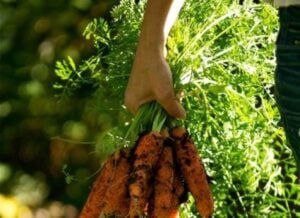A Guide to Planning Your Vegetable Garden for Food Preservation

Growing your own vegetables takes time, care and lots of attention, but, as any gardener knows, it is a satisfying task well worth the effort. However, once you’ve grown all of those amazing vegetables and fruits, you realize that you can only eat a certain amount during the growing season. Learning how to preserve and later enjoy the food you grow is a tremendously rewarding, and transforms a garden into plenty of food for year-round consumption. Planning your garden for food preservation will allow you to continue to enjoy your favorite crops until the next season comes along.
Anyone can delve into different types of food preservation by trying out sauces, pickles, jams and other foods that savor those fresh and juicy summer harvest flavors. Learning about the vegetables you like to grow, eat and preserve is your first step to successful food preservation, after which you can begin to consider the amounts you want to grow.
Vegetables can be divided into three groups based on how well they keep:
- The first group contains quickly perishable vegetables such as green peas, fresh lima beans, corn, tomatoes, peppers, asparagus and greens like chard, spinach and lettuces. These vegetables need to be eaten or processed into pickles, canned sauces, frozen foods or dehydrated as soon as possible after harvest.
- The second group includes slowly perishable vegetables such as broccoli, cauliflower, and cabbage. These foods can be stored for up to 3 weeks for fresh eating, but it is best to process them right after harvest for freezing and canning.
- The third group consists of the best keeper vegetables such as beets, carrots, turnips, potatoes and other root crops, alongside winter squash, pumpkins, onions, garlic and celery. When correctly stored, these crops can keep over the winter and into the spring months.
The chart below provides information on the amount of food to grow to keep a family of four stocked until the following spring. These vegetables can be canned, frozen, dehydrated or stored in a dark, cool place such as a basement or garage depending on their shelf life. Each pound of vegetables grown is equivalent to approximately a pound when frozen, meaning that a 500-pound freezer can hold 500-pounds worth of produce. The amounts will naturally vary according to a family’s appetites and preference for certain crops.
| Vegetable | Pounds to Raise Total | Quarts Canned | Feet of Row to Plant for Preservation | Approximate Amount of Seeds or Plants | Feet of Row for to Plant Fresh Consumption |
| Beets | 30 lbs. | 12 qts | 55 feet | 1 oz seed | 5 – 10 feet |
| Broccoli | 75 lbs. | 48 qts | 100 feet | 50 plants | 3-4 plants |
| Cabbage | 150 lbs. | 40 qts | 100 feet | 75-100 plants | 3-5 plants |
| Carrots | 120 lbs. | 30 qts | 100 feet | ¼ oz seed | 5-10 feet |
| Cauliflower | 30 lbs. | 10 qts | 60 feet | 50-65 plants | 3-4 plants |
| Green Beans | 70 lbs. | 40 qts | 135 feet | ½ lb. seed | 20 feet |
| Lima Beans | 90 lbs. | 24 qts | 350 feet | ½ lb. seed | 25 feet |
| Onions | 125 lbs. | 25 qts | 90 feet | 4-5 lbs. of sets | 2-5 feet |
| Peas | 100 lbs. | 15 qts | 175 feet | 1 lb. seed | 20 feet |
| Peppers | 50 lbs. | 25 qts | 75 feet | 50-75 plants | 3-4 plants |
| Potatoes | 500 lbs. | 400 lbs. dry store | 250 feet | 10-11 lbs. seed potatoes | 50-100 feet |
| Spinach | 90 lbs. | 35 qts | 175 feet | 1 oz. seed | 5-10 feet |
| Sweet Corn | 150 lbs. | 40 qts | 200 feet | 4 oz. seed | 50 feet |
| Tomatoes | 250 lbs. | 100 qts | 75 feet | 50 plants | 3-5 plants |
| Winter Squash | 200 lbs. | 40 qts | 135 feet | 1 oz. seed | 2-3 hills |
This chart can be a bit daunting at first glance, but provides insight on how much fresh produce is actually needed for an average, healthy diet. You may want to (or only can due to lack of space) stick to the amounts in the last column, which may leave you with some crops to preserve if you are not feeding 4 people.
Some vegetables such as lettuces, the cabbage family (cabbage, broccoli, cauliflower, collards), peas and spinach can be planted twice in most climates. This gives you the opportunity to harvest these crops twice and store less of them at once, cutting down on the amount of work at one given time. An early summer crop of the above vegetables should already be in the ground by April, and a late summer crop should be planted during the end of June/beginning of July.
Food preservation skills turn an overabundance of vegetable crops into an impressive resource that saves you money and provides you and your family with organic and preservative-free produce. Foods you grow in your garden are best for you in many ways. Investing in proper canning equipment, a dehydrator(s), and an ample size freezer are necessary for larger scale food preservation. A fantastic resource on food preservation is Stocking Up by Carol Hupping, a book that can be considered the bible of successfully putting up the fruits of a garden.
Source: Granny Miller
Image: Zidenko Zivkovic

